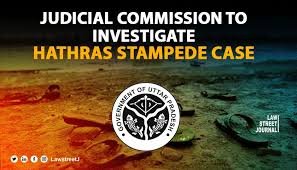Montana: The Treasure State of the United States
Montana, located in the northwestern region of the United States, is famously known as the Treasure State. This moniker stems from its rich mineral reserves and the extensive mining history that has significantly contributed to its economic development. The state’s diverse landscape and abundant natural resources have made it a crucial player in the mining industry, offering a treasure trove of minerals and gemstones.
Rich Mineral Reserves
Montana’s reputation as the Treasure State is well-deserved due to its vast mineral wealth. The state is home to numerous precious metals, including gold, silver, and copper. The discovery of these minerals in the 19th century spurred a mining boom, attracting prospectors and settlers eager to stake their claims. The mining industry remains a significant economic driver for Montana, with modern mining techniques continuing to extract valuable resources from the earth.
Historical Significance of Mining
The history of mining in Montana is both rich and colorful. The state’s mining heritage dates back to the mid-1800s when gold was discovered in Grasshopper Creek. This discovery led to the establishment of the town of Bannack, the first major gold rush town in Montana. Subsequent discoveries of silver and copper further solidified Montana’s status as a mining powerhouse. Towns like Butte and Helena grew rapidly, becoming central hubs for mining operations and economic activity.
Environmental Impact and Conservation Efforts
While mining has brought prosperity to Montana, it has also posed significant environmental challenges. The extraction of minerals often leads to land degradation, water pollution, and habitat destruction. In recent years, Montana has implemented stringent environmental regulations and conservation initiatives to mitigate the impact of mining activities. Efforts to reclaim and restore mined lands have been crucial in balancing economic development with environmental stewardship.
Tourism and Natural Beauty
In addition to its mineral wealth, Montana is renowned for its stunning natural beauty. The state’s vast wilderness areas, including Glacier National Park and Yellowstone National Park, attract millions of tourists each year. These natural attractions offer a plethora of recreational opportunities, from hiking and fishing to wildlife viewing and photography. The tourism industry complements Montana’s mining heritage, providing a diverse economic base for the state.
Economic Contributions and Future Prospects
Montana’s mining industry continues to be a vital part of its economy, providing jobs and generating revenue. Advances in mining technology and sustainable practices have improved efficiency and reduced environmental impact. Looking ahead, Montana is poised to maintain its status as the Treasure State, with ongoing exploration and development of its mineral resources promising continued economic benefits.

Why This News is Important
Economic Implications
Understanding Montana’s designation as the Treasure State highlights the significant economic contributions of the mining industry. This knowledge is crucial for students preparing for government exams, especially those focused on economic and industrial development.
Environmental Awareness
The environmental impact of mining and the state’s conservation efforts are essential topics for exams related to environmental science and policies. Awareness of these issues can help students understand the balance between economic growth and environmental protection.
Historical Context
Montana’s mining history is a key part of American history, relevant for exams in history and social studies. The state’s development through mining booms offers insights into the broader patterns of American westward expansion and economic growth.
Tourism Industry
The role of tourism in Montana’s economy provides a multifaceted view of the state’s economic landscape. This aspect is important for exams in geography, economics, and public administration.
Policy and Regulation
The state’s regulatory framework for mining and environmental conservation is relevant for law and public policy exams. Understanding these regulations can help students appreciate the complexities of managing natural resources.
Historical Context
Early Discoveries and Gold Rush
Montana’s mining history began in the mid-1800s with the discovery of gold in Grasshopper Creek. This event triggered the first major gold rush in the state, leading to the rapid establishment of towns like Bannack. The gold rush era was characterized by a frenzied influx of prospectors and settlers seeking fortune.
Expansion to Silver and Copper
Following the initial gold rush, significant deposits of silver and copper were discovered in Montana. These discoveries led to the development of major mining centers such as Butte and Helena. The mining of these metals played a crucial role in the state’s economic growth and attracted large-scale industrial operations.
Boomtowns and Economic Growth
The mining boom led to the rise of bustling boomtowns, which became central to Montana’s economy. Towns like Butte became known as the “Richest Hill on Earth” due to their vast mineral deposits. The influx of workers and businesses spurred economic development and transformed Montana into a key mining region.
Environmental and Regulatory Challenges
As mining operations expanded, the environmental impact became increasingly evident. Issues such as land degradation and water pollution prompted the implementation of environmental regulations. Montana’s history of mining is also marked by efforts to balance economic interests with environmental conservation.
Modern Mining Practices
In recent years, advances in mining technology and sustainable practices have reshaped the industry. Modern techniques have improved the efficiency of resource extraction while minimizing environmental damage. Montana continues to evolve as a significant mining state, with ongoing exploration and development of its mineral resources.
Key Takeaways from Montana: The Treasure State
| Serial No. | Key Takeaway |
|---|---|
| 1 | Montana is known as the Treasure State due to its rich mineral reserves. |
| 2 | The state has a significant history of gold, silver, and copper mining. |
| 3 | Environmental challenges from mining have led to stringent regulations and conservation efforts. |
| 4 | Montana’s natural beauty and tourism industry complement its mining heritage. |
| 5 | Advances in mining technology and sustainable practices are crucial for the state’s economic future. |
Important FAQs for Students from this News
What is Montana known as and why?
Montana is known as the “Treasure State” due to its rich mineral reserves, including gold, silver, and copper, which have historically driven its economic development.
What are the major minerals found in Montana?
Montana is rich in various minerals, notably gold, silver, and copper, which have been extensively mined since the 19th century.
How did mining impact Montana’s economy historically?
The discovery of precious metals in Montana led to significant economic growth, spurred by mining booms that attracted prospectors and settlers, and led to the establishment of numerous towns and cities.
What are some of the environmental challenges associated with mining in Montana?
Mining activities in Montana have led to land degradation, water pollution, and habitat destruction, prompting the implementation of strict environmental regulations and conservation efforts.
How does tourism complement Montana’s mining heritage?
Montana’s natural beauty, including landmarks like Glacier National Park and Yellowstone National Park, attracts millions of tourists annually, providing a diverse economic base alongside the mining industry.
Some Important Current Affairs Links













